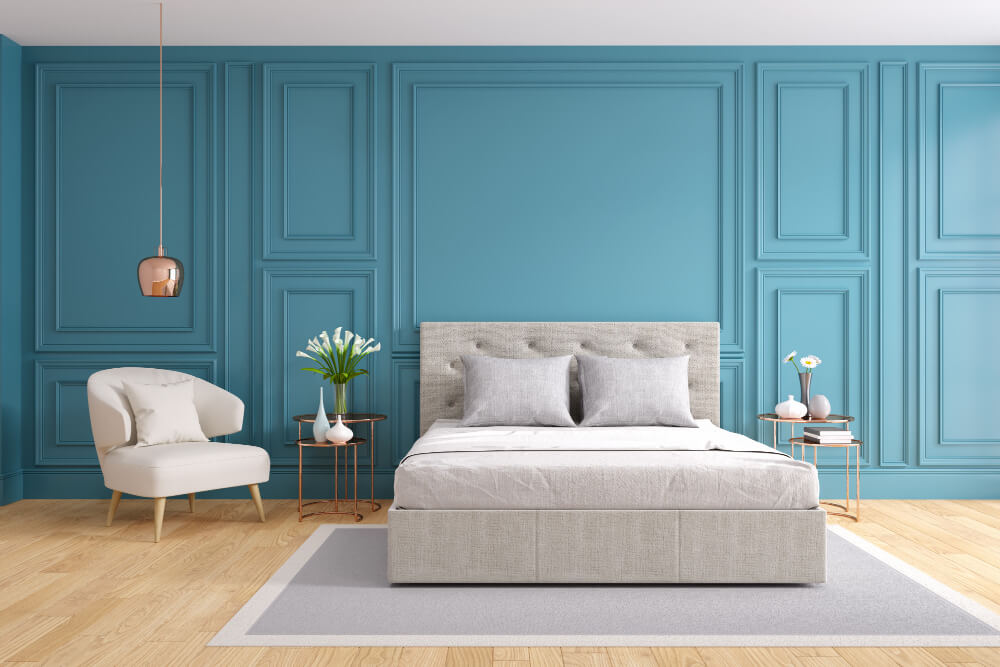Beds are undoubtedly the centrepiece of any bedroom’s décor and will become the defining component of the interior immediately after their integration. That is why a lot of thought goes into the selection of design, style, type and colour of the bed. They are available in a variety of styles and designs which can be combined to create a unique piece that can offer enhanced functionality and aesthetics.
However, these options can easily overwhelm anyone and create confusion when it comes to selection. But, we have tried to make things easy for you in this blog. We have explained the different types of bed bases that are available in the market. We have described them with their pros and cons to help you understand them properly and make an informed decision. So let’s start our journey.
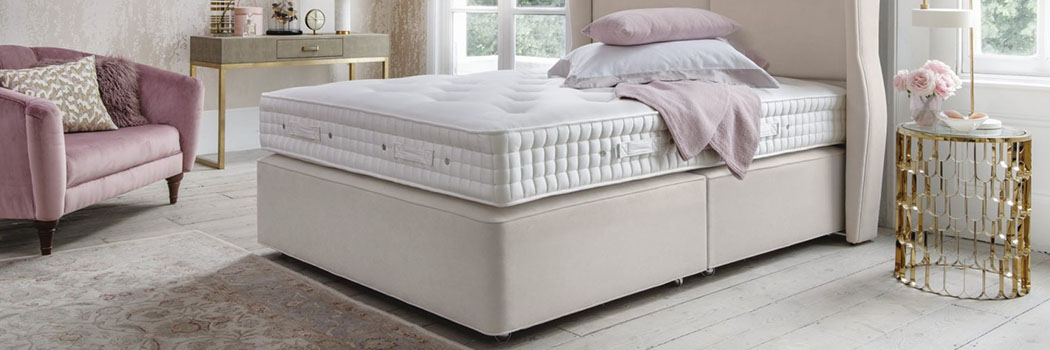
Divan Bases
Divan bed bases are basically hollow boxes, made from wood and upholstered to provide aesthetics to the room and the bed itself. They accommodate large drawers to facilitate diverse storage options that can be used to store excess linen, blankets and any other stuff.
They are covered with wooden frames and are made to measure with the mattresses to provide a sleek and stylish look. They are one of the popular choices in the UK due to their vast storage capacity. Their types include the following:
- Solid top divan base
- Sprung edge divan base
- Firm edge divan base
Pros:
- Often come with built-in storage options
- Versatile and suitable for a range of mattresses
- Can provide a uniform look to the bedroom
Cons:
- May lack aesthetic appeal compared to other options
- Limited design variation
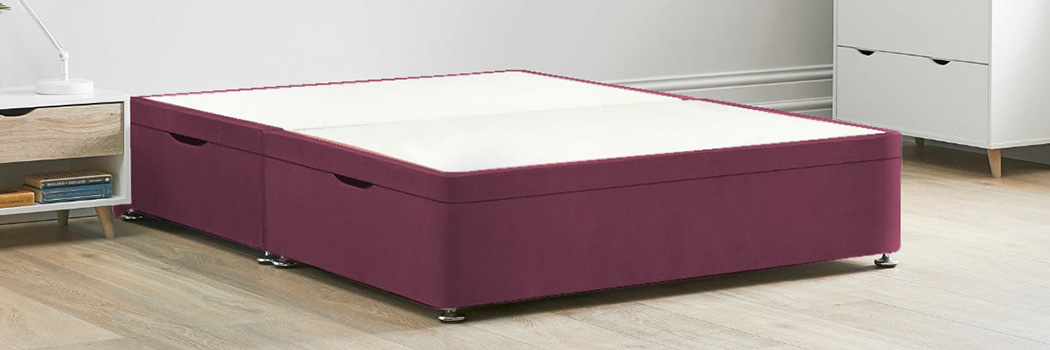
Ottoman Bases
Ottoman bases are somewhat similar to the Divan bases since they also feature hollow wooden boxes which are upholstered to add colours and aesthetics to the room. However, instead of drawers, they come with a liftable frame to facilitate storage inside their hollow base.
Their lift mechanism generally uses a gas or hydraulic lift system that allows gentle opening and closing of the frame. They are highly popular in the UK due to their suitability for smaller rooms where there is not enough space to open side drawers of a divan base. Their types include the following:
- Side-opening Ottoman bases
- Foot-end opening Ottoman bases
- Half-opening Ottoman bases
Pros:
- Offer ample under-bed storage space
- Great for smaller rooms with limited storage options
- Provide a sleek and modern look
Cons:
- Requires more effort to access storage compared to drawers in divan bases
- May be heavier to lift due to the storage mechanism
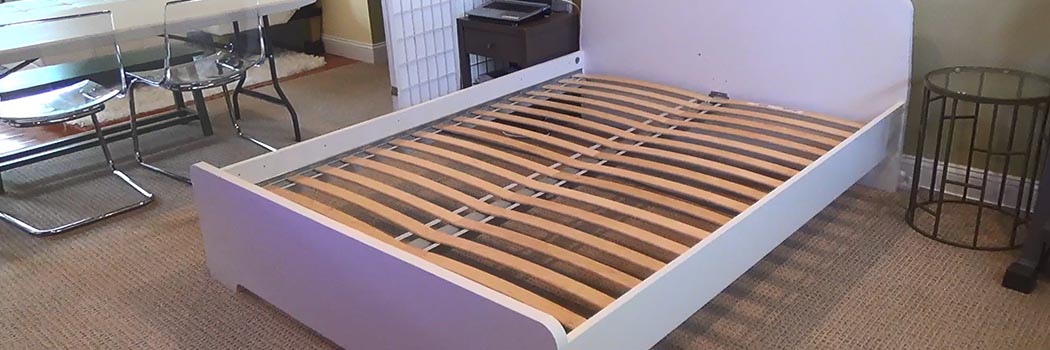
Slatted Bases
As the name depicts, slatted bases use the slats to support the mattress inside the bedstead. These slates can be made of wood, uPVC, metal or any other sturdy enough material that can efficiently bear the load of the mattress and the people efficiently.
Although they offer many options in terms of design, style and colours, bear in mind that they are relatively complicated to construct as compared to the Divan and Ottoman beds. Their common types are the following:
- Solid Slats
- Sprung Slats
- Adjustable Slats
- Flexible Slats
- Fixed Slats
Pros:
- Provide good mattress support and ventilation
- Allow for a firmer or softer feel depending on the mattress and slat type
- Often more affordable than other types of bases
Cons:
- Slat spacing may affect mattress support and comfort
- Require occasional checking and adjustment to prevent sagging
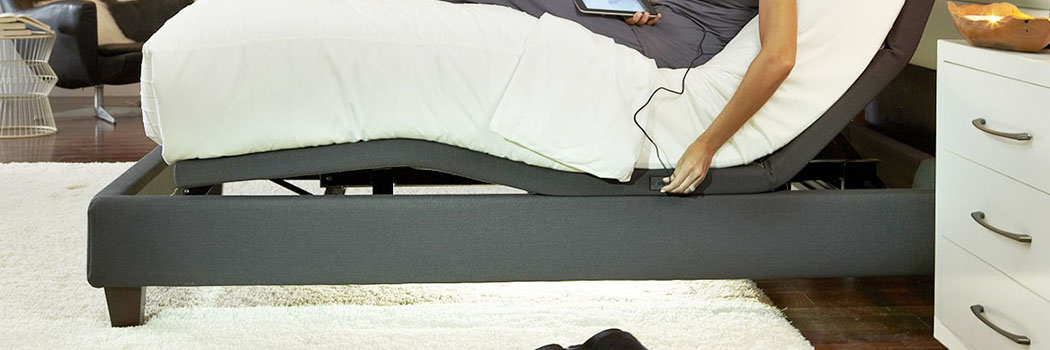
Adjustable Bases
As the name suggests, these bed bases are constructed with more than one piece of bedstead that can be adjusted according to the requirements. These bases generally feature wooden slats to facilitate easy adjustments.
These bases typically feature two or three adjustable sections but can reach up to five sections. Some of these bed bases are designed to slide backwards when the head section is lifted to accommodate easy body posture.
Pros:
- Allow for customisable sleeping positions
- Can provide relief for certain medical conditions
- Often come with massage features and remote controls
Cons:
- More expensive than traditional bed bases
- Limited aesthetic options
- Requires access to power outlets for electronic functions
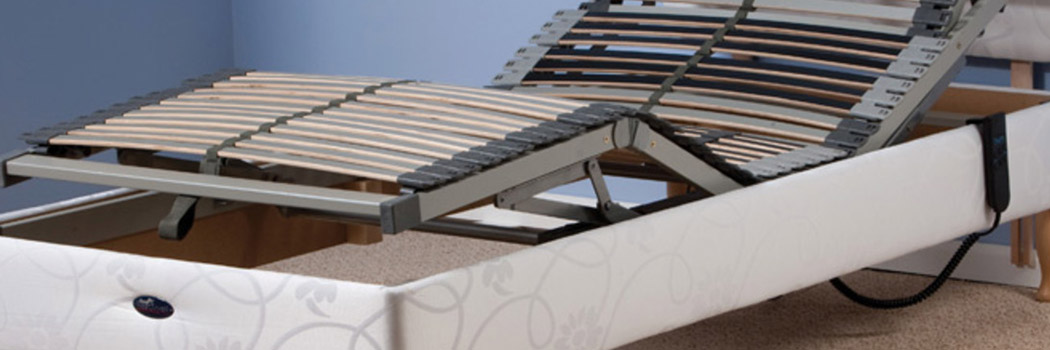
Electric Bed Bases
Electric bed bases are similar to adjustable bed bases. The difference is that they use a motorised mechanism to lift the sections of the base according to the requirement. These bed bases are relatively new and are significantly more expensive than others.
Electric bed bases are generally used in healthcare settings such as hospitals to provide easy lift to the head side or foot side of a patient’s bed.
Pros:
- Offer motorised adjustments for various sleeping positions
- Can enhance comfort and provide relief for specific health issues
- Often come with remote controls for easy operation
Cons:
- Higher cost compared to manual adjustable bases
- Dependence on electricity for functionality
- Limited availability in certain designs and sizes

